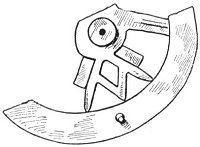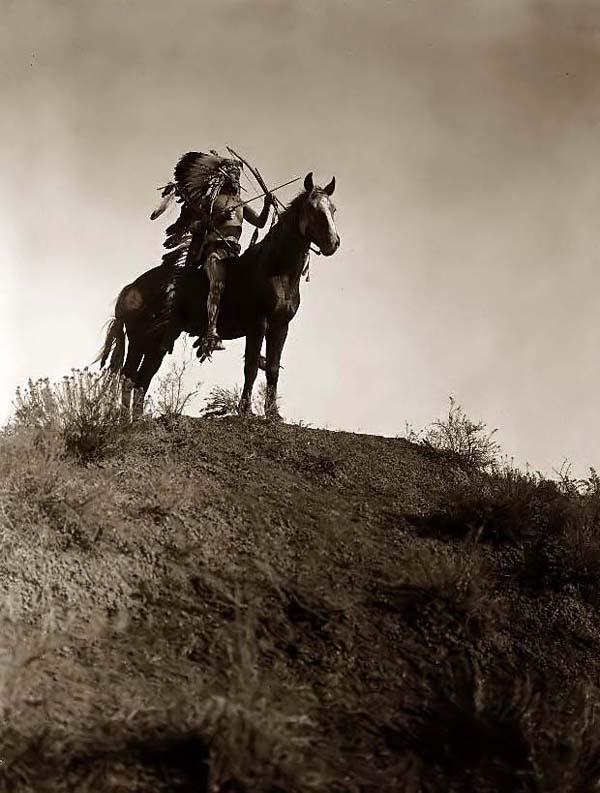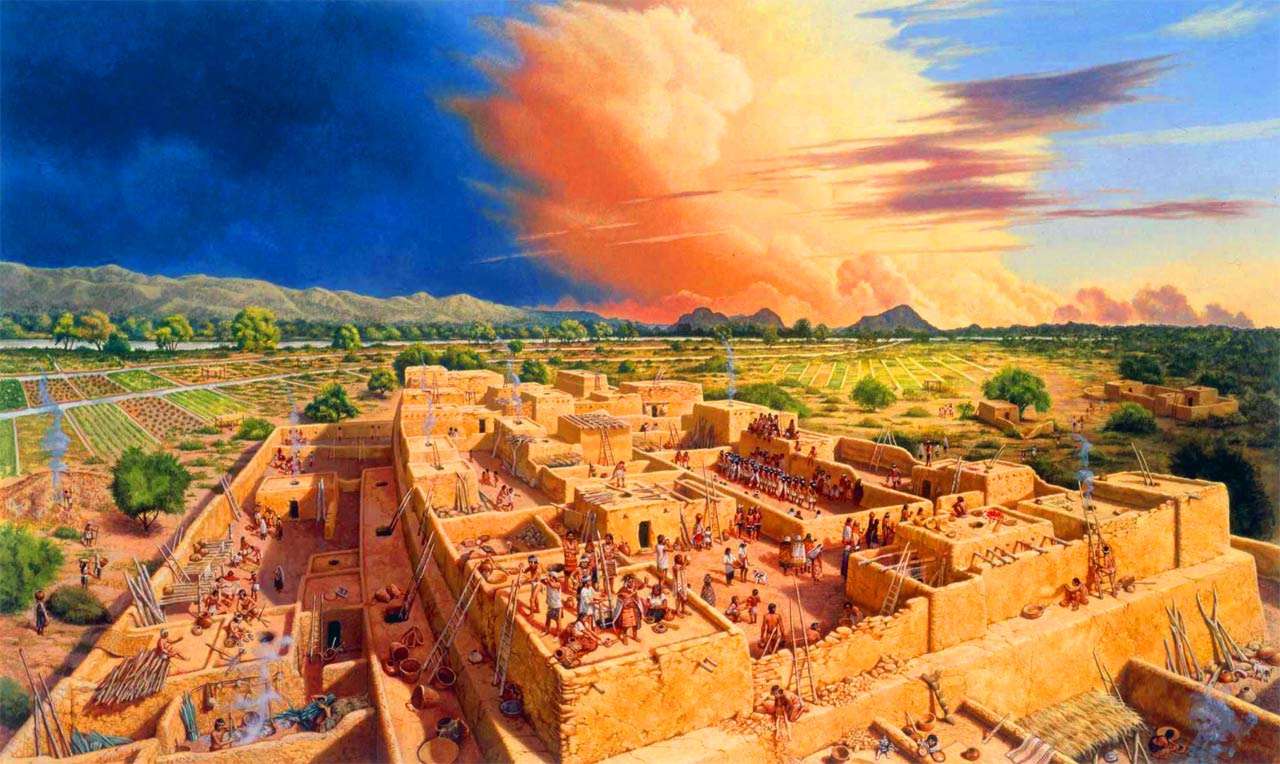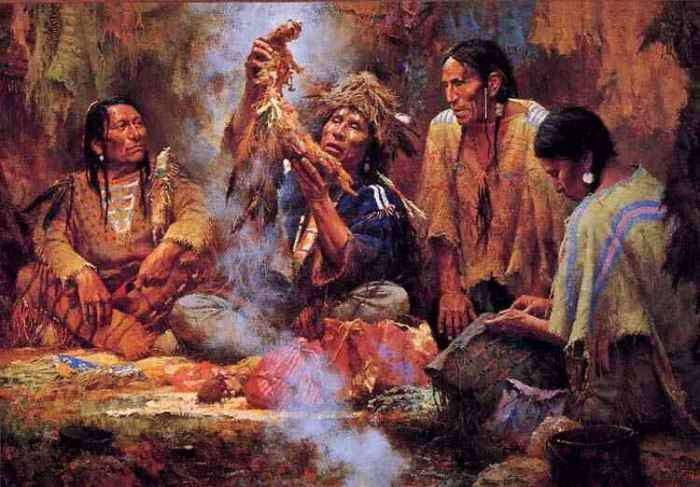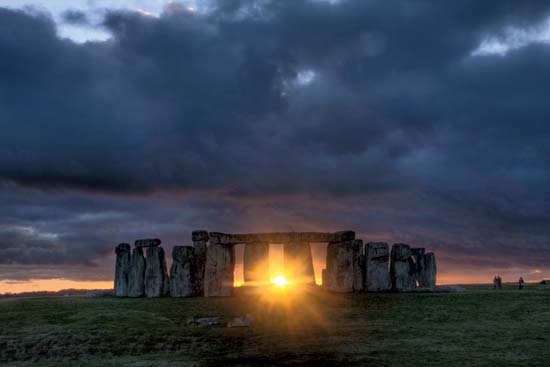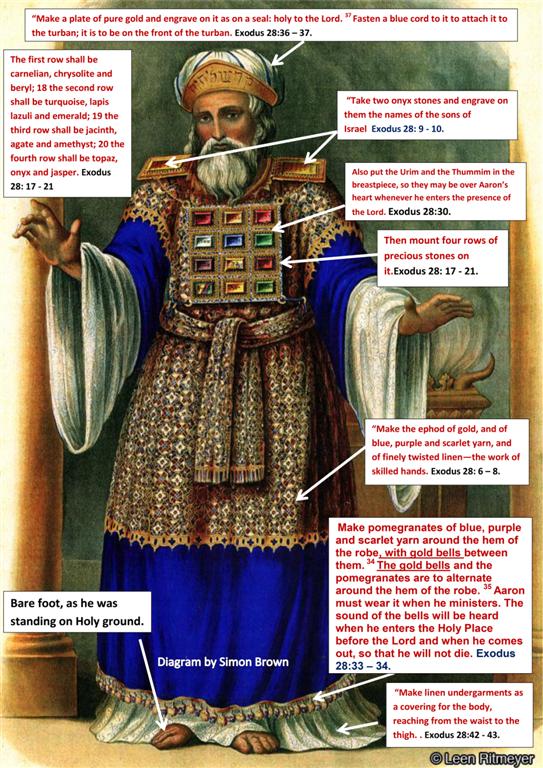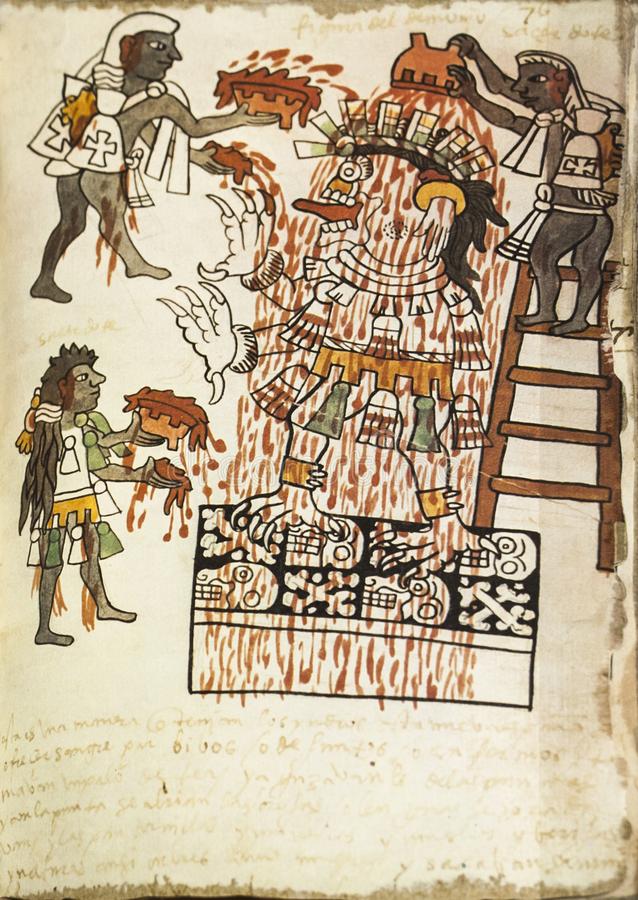The Phoenicians were masters at metal working, religion and the art of war just like the American Indians. In mythical lore, the 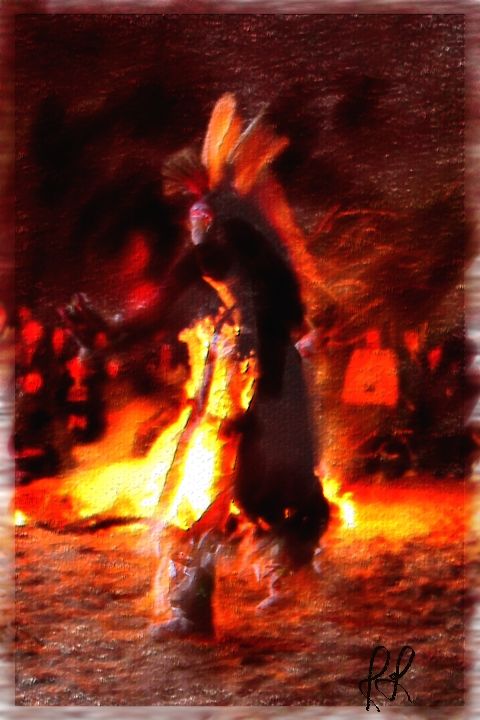 Phoenician Magi priests were known under several names such as the Corybnates, Coarbs, Cabiri, Telchines, and Curetes of Crete who were masters of magic, alchemy of plants, and archery just like the American Indians. These names of Magi priests from Phoenicia can also be easily found in the history of the American Indians, which connect these two ancient cultures as one separated by time and continents.
Phoenician Magi priests were known under several names such as the Corybnates, Coarbs, Cabiri, Telchines, and Curetes of Crete who were masters of magic, alchemy of plants, and archery just like the American Indians. These names of Magi priests from Phoenicia can also be easily found in the history of the American Indians, which connect these two ancient cultures as one separated by time and continents.
It is important to note that this Phoenician tribe of the Magi from Crete had worshiped the serpent and were also called fire-kindlers much like the American Indians had done. They had worshiped their main deity in the form of fire that they had constantly kept kindled in which the holy and powerful priests were the guardians of the divine power.
This fire was not the worship of flames and heat that can be found in a kindled fore, but an ancient symbol of the sacred force energy that can be found in humans and all living creatures. This energy force in the form of fire later became incorporated into idols being that of the various Gods of fire that can be found in many different parts of the world, and in the Scripture as the God Baal.
In ancient Phoenicia, this God was known under various names such as Moloch, Baal, and later under their cousins the Greeks as Hephaestus, and the Romans as Vulcan. Many Indian tribes had called this fire deity, Ochre. The Mayans even had a holy book known as Chilam Balam. Chilan or Chilam is a title of Mayan priests.
Two of the greatest of ancient Greek historians, Herodotus and Diodorus, both mention that the tower of Babel contained in one of its upper stories a statue of Belus. Strabo calls it the tomb of Bel (Baal). The Bible records the fact that Bel or Baal was the God worshiped at these high places and upon the roofs of houses, and in whose worship the Phoenician Hebrews caused their children to pass through the fire, (see Jer. 32:29 and 19:5.). A religious rite practiced also by many American Indian Tribes.
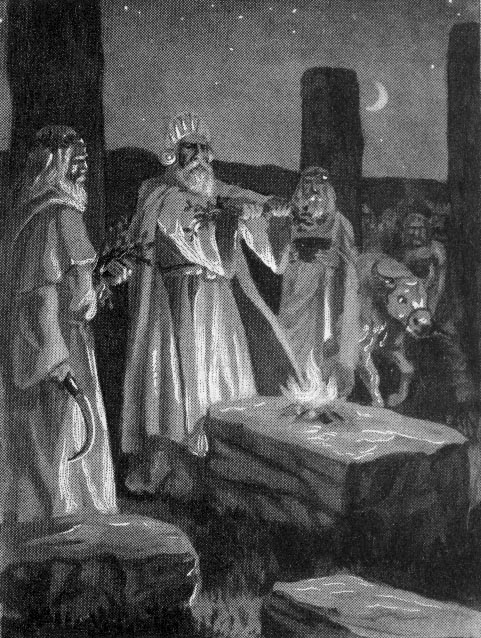 The Baaltine, or Beltane of Scotland and Ireland was celebrated with precisely the same rites of passing through fire by the Druids, which prevailed in India and in Palestine. The high-places or round towers of the coast of Ireland were undoubtedly places where the sun-fire was lighted up upon sacred days; and the usuage is not obsolete in some parts of Scotland and Ireland even to the present time.
The Baaltine, or Beltane of Scotland and Ireland was celebrated with precisely the same rites of passing through fire by the Druids, which prevailed in India and in Palestine. The high-places or round towers of the coast of Ireland were undoubtedly places where the sun-fire was lighted up upon sacred days; and the usuage is not obsolete in some parts of Scotland and Ireland even to the present time.
Now, this same primitive worship, not only in its form, but likewise in its objects of homage, prevailed from the first among the aboriginal tribes of America.
In Mexico and Central America, as is well known, the worship offered at the high-places or pyramids, was the worship of the Sun and Moon. The Baal and Ashtoroth of the East. The Osiris and Isis of Egypt. The Sun and Moon of Northman. The Bel of the Druids.
The same worship with its form of mounds or high-places was also prevalent among the tribes of the North American Indians, fading perceptibly with the migration of the tribes from the Mississippi valley to the colder regions of the North and East.
The reverend James B. Walker had said in 1859, “The sacred fire, and the festival in honor of the sun, were prevalent especially in the South and West, from Florida to Illinois; and although the Indians had lost the tradition of the origin of their rites, yet they observed them in some form in all their tribes. I was myself present at a corn-dance of the Ottawas, formerly hunting on the Maumee river, before the settlement of that region. They built two large fires at the time of the corn-gathering, and held a dance between the blazing piles which they continued most of the night. “(The Firelands Pioneer, Volumes 1-5)
These same traits can be found in the American Indians who had various ceremonies and dances pertaining to fire 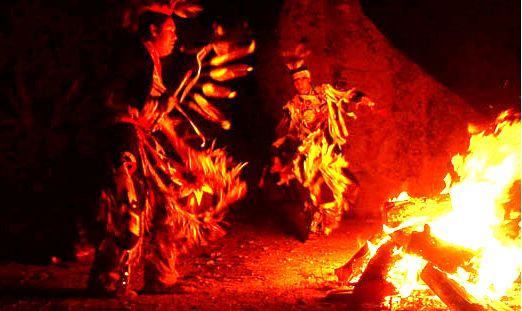 worship. The Indians had an annual fire-dance, their council-fires, their sacrifices in varied forms to the sun, in North America was the same as that of the Phoenician in Crete and their cousins the Druids in places such as Ireland and England. They paid homage to a fire spirit as ancestor, and their worship of fire god was akin to the divinity of the second sun and spirit, which they called Ochre, that he might not hurt them.
worship. The Indians had an annual fire-dance, their council-fires, their sacrifices in varied forms to the sun, in North America was the same as that of the Phoenician in Crete and their cousins the Druids in places such as Ireland and England. They paid homage to a fire spirit as ancestor, and their worship of fire god was akin to the divinity of the second sun and spirit, which they called Ochre, that he might not hurt them.
In the fire walk dance of the Indians, a fire is built, the glowing coals are spread, and the dancers then begin to dance, rushing into the fire and stamping it out. This performance has been described by the Prince of Wied, Reise in das innere Nord-America, ii, pp. 144, 218, 241 (2 vols., Coblenz, 1839-41), as the “Hot Dance” of the Mandan, Ankara, and Hidatsa. Among the Arapaho and Gros Ventre it has been noted as part of the Crazy Dance ceremony in Kroeber, “The Arapaho,” Bulletin of the American Museum of Natural History, XVIII, p. 190; id., “Ethnology of the Gros Ventre,” Anthropological Papers of the American Museum of Natural History, i, p. 245.
The Egyptians called the Phoenicians the Sea Peoples, and in the Ancient Egyptian texts they called the island Crete by the name of Keftiu. Crete was known as Kaftor, or Caphtor in the Old Testament. They were also known as the Telchnines, Curetes (Kouretes),Cappadocians, Corbanytes, Coarbs, Cabiri, Syrians or White Syrians, Atlanteans, Arcadians, and the Minoans. Herodotus had said that the Curetes had come to Crete with the Phoenician Prince Cadmus. Herodotus tells us that the name of the Cappadocians was applied to them by the Persians, while the Greeks had simply called them, “Syrians” or “White Syrians.” The Latin name of the Cappadocians were known as “the men of Caphtor”, who we can call today, “the men of Crete.”
The American Indians also have a people known as the Curetus (Coretus) just like the Phoenicians. The Curetus were a tribe of South American Indians, inhabiting the country between the rivers of Japura and Uaupés, northwestern Brazil. They are short but sturdy, wear their hair long, paint their bodies, and the women were naked. They painted their bodies just like many North American Indians and their cousins known as the Picts (painted people) in Ireland. Their houses are circular, with walls of thatch and a high conical roof. They are a peaceable people, living in small villages, each of which is governed by a chief. (Encyclopedia Britannica: A Dictionary of Arts, Sciences …, Volumes 7-8 edited by Hugh Chisholm)
In addition to a tribe of American Indians being named the Curetus just like the Phoenicians Curetes, there was an Inidian tribe in Kansas known as the Quiviras and Quivirans which is very similar to the Phoenician Cabeiri (Cabiri, Kabeiroi, or Kabiri; Ancient Greek: Κάβειροι), and the Druid Cabiri in Ireland and other countries the Phoenicians had colonized. In fact, before Kansas was called Kansas, it was known as Quivira.
There are stories told of Quivira and its king, Tatarrax when the Europeans being led by the crown and Church had ventured to the Americas such as that of the Spanish conqueror Cortez. It was said the King wore a long beard, adored a golden cross, and worshiped an image of the queen of heaven. (A History of California and an Extended History of Los Angeles By James Miller Guinn)
The Father of History, Herodotus explains that this word Cabiri is in fact a Phoenician Hebrew name, and he also quotes Pliny stating that the eight great gods of the Phoenicians, the offspring of one great father, Sydik, the “just,” were called Cabiri. The Phoenician Cabiri according to Herodotus involved the God of Fire known as Vulcan. The Phoenician Tyrians named their priests Cohanim (Kohanim). In the Torah, the priests of Baal are referred to as Cohen or Kohen or plural: Cohanim or Kohanim, which is a Hebrew word for priest or king, and the word Bol-Khan, specifically refers to the priests of Baal.
These priests claim direct patrilineal descent from the biblical Aaron, who is often called “‘Aaron the Priest“‘ (אֵהֲרֹן הֵכֹּהֵן) and once Aaron the Levite (אַהֲרֹן הַלֵּוִי) (Exodus 4:14). He who was the older brother of Moses, (Exodus 6:16-20, 7:7; Qur’an 28:34) and a prophet of God, that which we find in Baal which means “Lord and Master.”
The ancient Phoenician historian, Sanchoniatho had written on the history of his people with whom the Greeks were the inheritors and scribes of these same said stories. According to Sanchoniatho, the mysteries of the Cabiri were first celebrated by the Phoenicians, and introduced into Greece. He had written that first or original Cabiri were the eight Sons of Sydyc, who was a Canaanite. They lived in the Days of Taaut of Thoth, who is the same as the Phoenician Hermes. Pausanias, the Greek historian and geographer who lived in the time of his cousin, the Roman Emperor Hadrian, relates, that the Mother of the Gods was anciently worshiped at Thebes with the Cabiri, whose Names and Mysteries he durst not divulge.
The Indian Quiviras and Quivirans of America had celebrated the same religious rites as the Phoenician Hebrew Cabiri, which were also celebrated by the Celtic Druids who are who I believe to be of the same race. Just like the Phoenician and Druid Cabiri and the many other Phoenician Indian tribes of the Americas, the Indians from Kansas known as the Quiviran had very similar religious rites and fire rituals.
One of the most formidable of the Celtic gods was called Samhain, or Balsab, and an old Irish: glossary calls Samhan, cabur. In the ancient Irish mythology, Cabur was the stone-builder of Tara, and in the story of King Solomon, he employs the help of a worm named Shamir to help him build Solomon’s Temple. These rites are described as ceremonies that deal with the sacred fire, and the festival known as Samhain, or the rites of Baal with the Druids. One of their main festivals was on the day of November 1st. This day was originally celebrated as Samhain, (Bal or Baal Samhain and Beltine) – a sacred festival of the ancient Celts and Druids who were also known as pagans.
November 1st is the first day of winter, when the High Kings of Ireland held festival of traditional fires of Samhain at Tara Hill with a great feast to celebrate the vernal equinox, the death of the god of fire, Baal, corresponding to the festival of his death. The meaning of the Gaelic or Old Irish word Samhain is “summer’s end,” and “Bal or Baal” signifies both in Gaelic as in Phoenician, “the lord of heaven”, and in the Punic language signified power, knowledge; bale in Irish signifies the same.
The Latin name Cabiri and Old Irish Cabur is derived from the Phoenician Hebrew word Kabir that is sometimes spelled Cabir, Chabir, Chabiru and Chabireh. Cabur was once of the ancient God of Ireland being that of the ancient Irish pantheon of Gods known as Axire, Axcearas, Coismaol, and Cabur.
The word Cabir or Kabir can be found in the Scriptures such as in the Orthodox Jewish Bible (OJB),where it is written, “See, El is kabir (mighty), and despiseth not any; He is kabir in ko’ach lev (strength of understanding). (Iyov 36:5) Hence, in the etymology of Cabiri, we find it means “strong or powerful. El was a name for God and thus, the followers of El were the Hebrew Kabirs or the Latin Cabiri that were the strong and mighty men who followed the true God.
Gnostic Warrior Conclusion
The facts are that none of this research that I have shared with you connecting the American Indians with the Phoenicians should surprise those of you who are educated on the true history of our world. It is well known by seasoned historians and archeologist who live by truth, that the Phoenicians were the first true masters and the merchants of the sea, and their religion of fire and worship was in turn imported around the world in their massive boats along with their related cultures to many lands in the West such as Ireland, Scotland, England, Spain, Rome, and of course the Americas where we find their religious traditions and tribal customs with the Indians whom I know to be the ancesteral remenants of the first wave of Phoenician expeditions to these lands.
As I have disclosed in some of my previous articles, I’m an American who is of Phoenician descent. My skin today is of a white and reddish tone and I have blue eyes. My wife is Mexican American with beautiful white and brown skin. I have no race axe to grind or title to claim.
My mission is Truth, and to simply help restore some of this lost history of my ancestors and my many cousins who are the branches from the Tree of the Lost Tribes of Israel from all around the world. A history that I feel should unite us rather than keep us separate like we have been for thousands of years.

Moe is the founder of GnosticWarrior.com. He is a father, husband, author, martial arts black belt, and an expert in Gnosticism, the occult, and esotericism.

